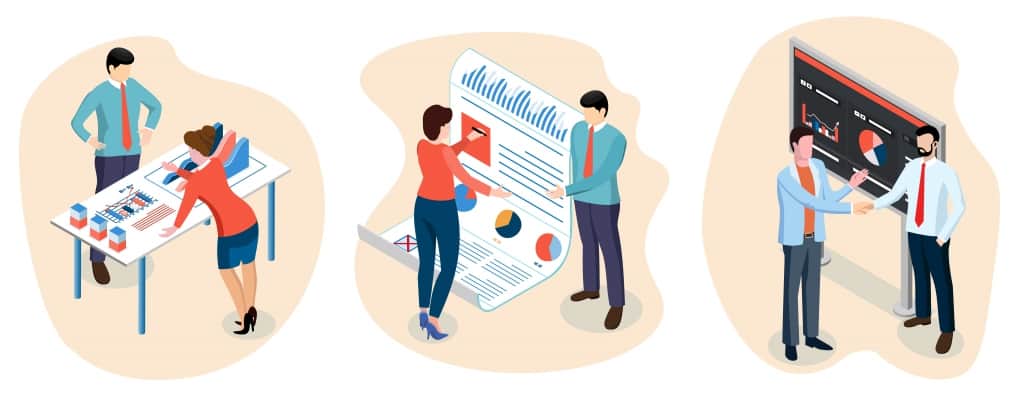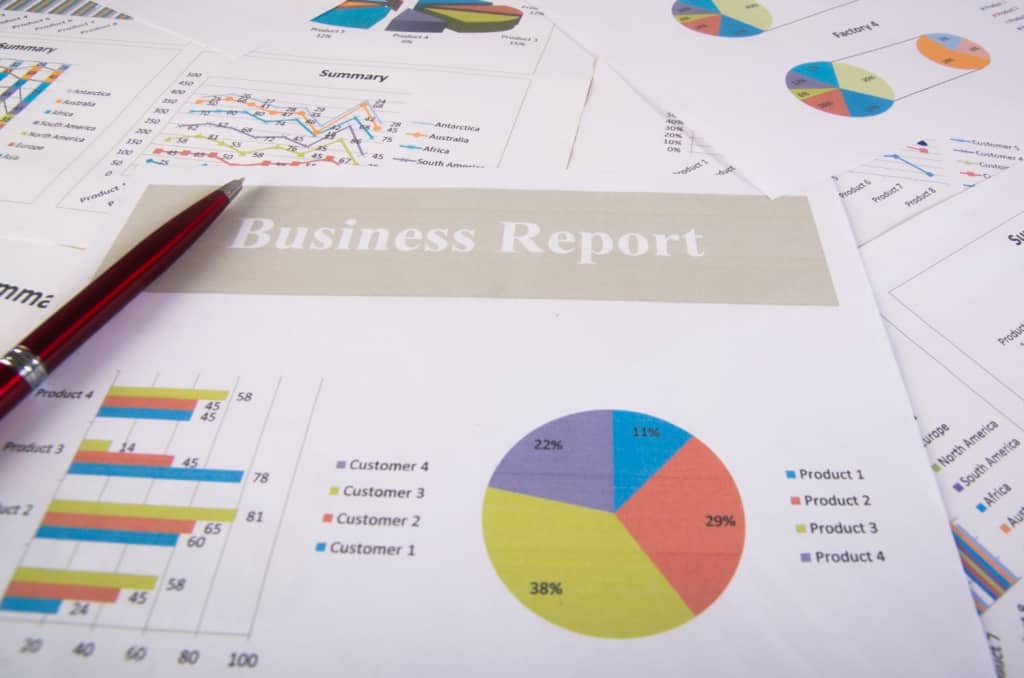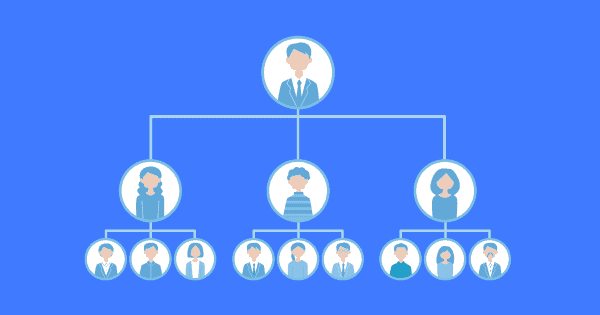Whether you’re managing projects, running a business, or working as a freelancer, the project plays a vital role in driving the growth of your business model. It offers a structured and systematic way to assess project performance, pinpoint areas that need improvement, and achieve optimal outcomes.
In this blog post, we’ll delve into project evaluation, discover its definition, benefits, key components, types, project evaluation examples, post-evaluation reporting, and create a project evaluation process.
Let’s explore how project evaluation can take your business toward new heights.
Tafole ea likateng
Malebela a Ho Kopanelana ha Molemo

U batla mokhoa o kopanetsoeng oa ho tsamaisa morero oa hau hamolemo?
Fumana lithempleite le lipotso tsa mahala tseo u ka li bapalang libokeng tsa hau tse tlang. Ingolise mahala 'me u nke seo u se batlang ho AhaSlides!
🚀 Nka Ak'haonte ea Mahala
Tekolo ea Morero ke Eng?
Project evaluation is the assessment of a project’s performance, effectiveness, and outcomes. E kenyelletsa lintlha ho bona hore na morero o hlahloba lipakane tsa oona le ho finyella litekanyetso tsa katleho.
Tlhahlobo ea morero e fetela ka nģ'ane ho feela ho metha liphetho le tse ka tlisoang; e hlahloba phello e akaretsang le boleng bo hlahisoang ke morero.
By learning from what worked and didn’t, organizations can improve their planning and make changes to get even better results next time. It’s like taking a step back to see the bigger picture and figure out how to make things even more successful.
Melemo Ea Tlhahlobo ea Morero
Tlhahlobo ea morero e fana ka melemo e mengata ea bohlokoa e kenyang letsoho katlehong le kholong ea mokhatlo, ho kenyelletsa:
- E ntlafatsa ho etsa liqeto: E thusa mekhatlo ho lekola ts'ebetso ea projeke, ho tseba libaka tse lokelang ho ntlafatsoa, le ho utloisisa lintlha tse tlatsetsang katlehong kapa ho hloleheng. Kahoo ba ka etsa liqeto tse nang le tsebo e ngata mabapi le kabo ea lisebelisoa, ho beha projeke pele, le moralo oa maano.
- E ntlafatsa ts'ebetso ea projeke: Ka tlhahlobo ea merero, mekhatlo e ka tseba matla le mefokolo ka har'a merero ea bona. Sena se ba lumella ho kenya tšebetsong mehato ea tokiso ho ntlafatsa sephetho sa morero.
- E thusa ho fokotsa likotsi: Ka ho hlahloba khafetsa tsoelo-pele ea morero, mekhatlo e ka tseba likotsi tse ka bang teng le ho nka litharollo ho fokotsa monyetla oa ho lieha ha morero, ho fetella ha tekanyetso, le litaba tse ling tse neng li sa lebelloa.
- E khothalletsa ntlafatso e tsoelang pele: Ka ho sekaseka mefokolo ea merero, mekhatlo e ka ntlafatsa mekhoa ea bona ea taolo ea merero, mokhoa ona oa ho ipheta-pheta oa ntlafatso o susumetsa boqapi, katleho, le katleho ea morero ka kakaretso.
- E ntlafatsa likamano le khotsofalo ea ba amehang: Evaluating outcomes and gathering stakeholders’ feedback enables organizations to understand their needs, expectations, and satisfaction levels.
- E khothaletsa ponaletso: Liphetho tsa tlhahlobo li ka fetisetsoa ho ba amehang, ho bonts'a ponaletso le ho theha tšepo. Liphetho li fana ka tlhahlobo ea ts'ebetso ea morero, ho netefatsa hore merero e tsamaisana le merero ea leano le lisebelisoa li sebelisoa ka nepo.

Likarolo Tsa Bohlokoa Tsa Tekolo ea Morero
1/ Clear Objectives and Criteria:
Project evaluation begins with establishing clear objectives and criteria for measuring success. These objectives and criteria provide a framework for evaluation and ensure alignment with the project’s goals.
Mona ke mehlala ea moralo oa tlhahlobo ea morero le lipotso tse ka thusang ho hlalosa sepheo le litekanyetso tse hlakileng:
Lipotso tsa ho Hlalosa Maikemisetso a Hlakileng:
- Ke lipakane life tse tobileng tseo re batlang ho li finyella ka morero ona?
- Ke liphetho life tse lekantsoeng tseo re li lebileng?
- Re ka lekanya katleho ea morero ona joang?
- Na lipheo ke tsa 'nete le tse ka fihlellehang ka har'a lisebelisoa le nako e behiloeng?
- Are the objectives aligned with the organization’s strategic priorities?
Mehlala ea Litekanyetso tsa Tekolo:
- Litšenyehelo: Ho hlahloba hore na morero o phethiloe ka har'a tekanyetso e fanoeng le boleng ba chelete.
- Nako ea nako: Ho lekola hore na morero o phethiloe ka har'a kemiso e reriloeng 'me o kopane le maemo a bohlokoa.
- Quality: Ho hlahloba hore na tse ka hlahisoang ke projeke le liphetho li kopana le litekanyetso tsa boleng tse reriloeng esale pele.
- Khotsofalo ea ba amehang: Gather feedback from stakeholders to gauge their satisfaction level with the project’s results.
- Tšusumetso: Measuring the project’s broader impact on the organization, customers, and community.
2/ Data Collection and Analysis:
Tlhahlobo e nepahetseng ea morero e itšetlehile ka ho bokella lintlha tse nepahetseng ho hlahloba ts'ebetso ea morero. Sena se kenyelletsa ho bokella lintlha tse ngata le tsa boleng ka mekhoa e fapaneng e kang lipatlisiso, lipuisano, litebello le tlhahlobo ea litokomane.
The collected data is then analyzed to gain insights into the project’s strengths, weaknesses, and overall performance. Here are some example questions when preparing to collect and analyze data:
- What specific data needs to be collected to evaluate the project’s performance?
- Ke mekhoa efe le lisebelisoa tse tla sebelisoa ho bokella lintlha tse hlokahalang (mohlala, lipatlisiso, lipuisano, litebello, tlhahlobo ea litokomane)?
- Ke bo-mang ba ka sehloohong ba amehang bao data e lokelang ho bokelloa ho bona?
- Mokhoa oa ho bokella lintlha o tla hlophisoa le ho hlophisoa joang ho netefatsa ho nepahala le ho phethahala?
3/ Performance Measurement:
Performance measurement involves assessing the project’s progress, outputs, and outcomes about the established objectives and criteria. It includes tracking key performance indicators (KPIs) and evaluating the project’s adherence to schedules, budgets, quality standards, and stakeholder requirements.
4/ Stakeholder Engagement:
Ba amehang ke batho ka bomong kapa lihlopha tse anngoeng ke morero ka kotloloho kapa ka tsela e sa tobang kapa ba nang le thahasello e kholo liphellong tsa eona. Li ka kenyelletsa batšehetsi ba morero, litho tsa sehlopha, basebelisi ba ho qetela, bareki, litho tsa sechaba, le mekha e meng e amehang.
Ho kenyelletsa bankakarolo tšebetsong ea tlhahlobo ea morero ho bolela ho ba kenyelletsa le ho batla maikutlo a bona, maikutlo, le lintlha tsa bona. Ka ho buisana le bankakarolo, ho shejoa maikutlo a bona le liphihlelo tsa bona tse fapaneng, ho netefatsa tlhahlobo e felletseng.
5/ Reporting and Communication:
Karolo ea ho qetela ea bohlokoa ea tlhahlobo ea morero ke tlaleho le puisano ea liphetho tsa tlhahlobo. Sena se kenyelletsa ho hlophisa tlaleho e felletseng ea tlhahlobo e fanang ka liphetho, liqeto le likhothaletso.
Effective communication of evaluation results ensures that stakeholders are informed about the project’s performance, lessons learned, and potential areas for improvement.

Mefuta ea Tlhahlobo ea Morero
Ka kakaretso ho na le mefuta e mene ea mantlha ea tlhahlobo ea morero:
#1 – Performance Evaluation:
Tlhahlobo ea mofuta ona e tsepamisitse maikutlo holim'a ho hlahloba ts'ebetso ea morero ho latela ho khomarela meralo ea morero, linako, likhakanyo tsa lichelete, 'me litekanyetso tsa boleng.
E hlahloba hore na morero o finyella lipakane tsa oona, o fana ka liphello tse reriloeng, le ho sebelisa lisebelisoa ka katleho.
#2 – Outcomes Evaluation:
Outcomes evaluation assesses the broader impact and results of a project. It looks beyond the immediate outputs and examines the long-term outcomes and benefits generated by the project.
Mofuta ona oa tlhahlobo o sheba hore na morero o fihletse eona lipakane tse lakatsehang, bōpile liphetoho tse ntle, le ho kenya letsoho ho litlamorao tse reriloeng.
#3 – Process Evaluation:
Tlhahlobo ea ts'ebetso e hlahloba katleho le katleho ea ts'ebetso ea ts'ebetso ea morero. E hlahloba tsamaiso ea morero mawa afe, mekhoa, 'me litsela se sebedisoang ho phethahatsa morero.
Mofuta ona oa tekolo o shebane le ho hloaea libaka tse ka ntlafatsoang moralong oa morero, ts'ebetsong, khokahanyo le puisano.
#4 – Impact Evaluation:
Impact evaluation goes even further than outcomes evaluation and aims to determine the project’s kamano ea sesosa ka liphetoho kapa litlamorao tse bonoang.
E batla ho utloisisa hore na morero o ka amahanngoa hakae le liphello tse fihletsoeng le liphello, ho ela hloko lintlha tse ka ntle le litlhaloso tse ling tse ka bang teng.
*Hlokomela: These types of evaluation can be combined or tailored to suit the project’s specific needs and context.
Mehlala ea Tlhahlobo ea Morero
Mehlala e fapaneng ea tlhahlobo ea morero ke e latelang:
#1 – Performance Evaluation
A construction project aims to complete a building within a specific timeframe and budget. Performance evaluation would assess the project’s progress, adherence to the construction schedule, quality of workmanship, and utilization of resources.
| Sehlopha | Tekanyo/ Lesupa | E hlophisitsoe | sebele | Phapang |
| Kemiso ea Kaho | Mehato ea bohlokoa e fihletsoeng | [Mehato e reriloeng] | [Litaba tsa sebele] | [Ho fapana ha matsatsi] |
| Boleng ba Mosebetsi | Litlhahlobo tsa sebaka | [Litlhahlobo tse reriloeng] | [Litlhahlobo tsa sebele] | [Phapang palo] |
| Tšebeliso ea Mehloli | Tšebeliso ea lichelete | [Tekanyetso e reriloeng] | [Litšenyehelo tsa sebele] | [Phapang ka palo] |
#2 – Outcomes Evaluation
Mokhatlo o sa etseng phaello o kenya tšebetsong morero oa ntlafatso ea sechaba mabapi le ho ntlafatsa litekanyetso tsa ho bala le ho ngola libakeng tse hlokang menyetla. Tlhahlobo ea liphetho e tla kenyelletsa ho lekola maemo a ho bala le ho ngola, ho ba teng sekolong, le ho kenya letsoho sechabeng.
| Sehlopha | Tekanyo/ Lesupa | Ho Kena-pele | Ka mor'a ho kenella | Phetoho/ Tshusumetso |
| Maemo a ho Bala le ho Ngola | Litekanyetso tsa ho bala | [Lintlha tsa tlhahlobo] | [Lintlha tsa tlhahlobo] | [Fetola ka lintlha] |
| Ho ba Teng Sekolong | Lirekoto tsa ba bileng teng | [Ho ba teng pele ho ts'ebetso] | [Ba teng ka mor'a ho kena lipakeng] | [Phetoho ea ba bang teng] |
| Tšebelisano ea Sechaba | Lipatlisiso kapa maikutlo | [Tlhaloso ea pele ho ts'ebetso] | [Tlhaloso ea kamora ho kenella] | [Phetoho ea boikopanyo] |
#3 – Process Evaluation – Project Evaluation Examples
An IT project involves the implementation of a new software system across a company’s departments. Process evaluation would examine the project’s implementation processes and activities.
| Sehlopha | Tekanyo/ Lesupa | E hlophisitsoe | sebele | Phapang |
| Moralo oa Morero | Etsa moralo oa ho khomarela | [Khomarelo e reriloeng] | [Ho latela melao] | [Phapang ka peresente] |
| le be le Puisano | Maikutlo a tsoang ho litho tsa sehlopha | [Tlhaloso e reriloeng] | [Tlhaloso ea 'nete] | [Phapang palo] |
| koetliso ea | Litlhahlobo tsa lithupelo | [Litlhahlobo tse reriloeng] | [Litlhahlobo tsa sebele] | [Phapang ea lintlha] |
| Fetola Puso | Fetola litefiso tsa ho adoptha | [Kamohelo e reriloeng] | [Ho nkeloa ngoana ka tsela ea sebele] | [Phapang ka peresente] |
#4 – Impact Evaluation
A public health initiative aims to reduce the prevalence of a specific disease in a targeted population. Impact evaluation would assess the project’s contribution to the reduction of disease rates and improvements in community health outcomes.
| Sehlopha | Tekanyo/ Lesupa | Ho Kena-pele | Ka mor'a ho kenella | tshusumetso |
| Ho ata ha Mafu | Litlaleho tsa bophelo bo botle | [Tlhahiso ea pele ho ts'ebetso] | [Kamora ho kena lipakeng] | [Phetoho ea ho ata] |
| Liphello tsa Bophelo bo Botle ba Sechaba | Lipatlisiso kapa litekanyetso | [Liphetho tsa pele ho ho kenella] | [Liphetho tsa kamora ho kenella] | [Phetoho ea liphetho] |

Step-by-step To Create Project Evaluation
Mona ke tataiso ea mohato ka mohato ho u thusa ho theha tlhahlobo ea morero:
1/ Define the Purpose and Objectives:
- Hlalosa ka ho hlaka sepheo sa tlhahlobo, joalo ka ts'ebetso ea projeke kapa liphetho tsa ho metha.
- Establish specific objectives that align with the evaluation’s purpose, focusing on what you aim to achieve.
2/ Identify Evaluation Criteria and Indicators:
- Hlalosa mekhoa ea tlhahlobo ea morero. Tsena li ka kenyelletsa ts'ebetso, boleng, litšenyehelo, ho latela kemiso, le khotsofalo ea ba amehang.
- Hlalosa matšoao a lekanngoang bakeng sa ntlha ka 'ngoe ho thusa ho bokella le ho hlahloba lintlha.
3/ Plan Data Collection Methods:
- Hlalosa mekhoa le lisebelisoa tsa ho bokella lintlha tse kang lipatlisiso, lipuisano, litebello, tlhahlobo ea litokomane, kapa mehloli ea data e teng.
- Rala lethathamo la lipotso, litataiso tsa lipuisano, manane a boithuto, kapa lisebelisoa tse ling ho bokella lintlha tse hlokahalang. Etsa bonnete ba hore li hlakile, li khutsitse, 'me li tsepamisitse maikutlo ho bokelleng lintlha tse nepahetseng.
4/ Bokella Lintlha:
- Kenya ts'ebetsong mekhoa e reriloeng ea ho bokella lintlha le ho bokella lintlha tse hlokahalang. Etsa bonnete ba hore pokello ea lintlha e etsoa ka mokhoa o tsitsitseng le ka nepo ho fumana liphetho tse tšepahalang.
- Nahana ka boholo bo nepahetseng ba sampole le ba amehang ba shebiloeng bakeng sa pokello ea lintlha.
5/ Analyze Data:
Hang ha data e bokelloa, e sekaseke ho fumana lintlha tse utloahalang. U ka sebelisa lisebelisoa le mekhoa ea ho hlalosa lintlha le ho tseba mekhoa, mekhoa le liphetho tsa bohlokoa. Netefatsa hore tlhahlobo e ikamahanya le litekanyetso le lipheo tsa tlhahlobo.
6/ Draw Conclusions and Make Recommendations:
- Based on the evaluation outcomes, conclude the project’s performance.
- Etsa likhothaletso tse sebetsang bakeng sa ntlafatso, u totobatsa libaka kapa maano a ho ntlafatsa katleho ea projeke.
- Lokisetsa tlaleho e felletseng e hlahisang tšebetso ea tlhahlobo, liphuputso, liqeto le likhothaletso.
7/ Communicate and Share Results:
- Arolelana liphetho tsa tlhahlobo le ba amehang le ba etsang liqeto.
- Sebelisa liphuputso le likhothaletso ho tsebisa moralo oa morero oa nako e tlang, ho etsa liqeto, le ntlafatso e tsoelang pele.
Tlhahlobo ea poso (Tlaleho)
Haeba u qetile tlhahlobo ea morero, ke nako ea hore tlaleho ea morao-rao e fane ka kakaretso e felletseng ea ts'ebetso ea tlhahlobo, liphetho tsa eona, le litlamorao tsa merero.

Lintlha tseo u lokelang ho li hopola ke tsena bakeng sa tlaleho ea morao-rao ea tlhahlobo:
- Fana ka kakaretso e khuts'oane ea tlhahlobo, ho kenyeletsoa sepheo sa eona, liphetho tsa bohlokoa, le likhothaletso.
- Hlalosa mokhoa oa tlhahlobo, ho kenyelletsa mekhoa ea pokello ea lintlha, lisebelisoa le mekhoa e sebelisitsoeng.
- Hlahisa liphetho tsa mantlha le liphetho tsa tlhahlobo.
- Totobatsa likatleho tse kholo, likatleho, le libaka tseo u lokelang ho li ntlafatsa.
- Buisanang ka litlamorao tsa liphetho tsa tlhahlobo le likhothaletso tsa moralo oa morero, ho etsa liqeto, le kabo ea lisebelisoa.
Litekanyetso tsa Tekolo ea Morero
Here’s an overall project evaluation templates. You can customize it based on your specific project and evaluation needs:
| Selelekela: – Project Overview: […] – Evaluation Purpose: [...] Mekhoa ea tlhahlobo: Pokello le Tlhahlobo ea Lintlha: Likarolo tsa Tlhahlobo: b. Tlhahlobo ea Liphetho: c. Tlhahlobo ea Ts'ebetso: d. Ho Kopanelana le Batšehetsi: e. Tekolo ea Tšusumetso: Litlaleho le Litlhahiso: fihlela qeto ena: |
Litsela tsa bohlokoa
Tlhahlobo ea morero ke ts'ebetso ea bohlokoa e thusang ho lekola ts'ebetso, sephetho le katleho ea morero. E fana ka lintlha tsa bohlokoa mabapi le se sebelitseng hantle, libaka tsa ntlafatso, le lithuto tse ithutoang.
Mme o seke oa lebala AhaSlides play a significant role in the evaluation process. We provide litempele tse entsoeng esale pele le likarolo tse sebelisanang, which can be utilized to collect data, insights and engage stakeholders! Let’s explore!
FAQs
Mefuta e 4 ea tlhahlobo ea morero ke efe?
Tlhahlobo ea Ts'ebetso, Tekolo ea Liphetho, Tekolo ea Ts'ebetso le Tlhahlobo ea Phello.
Mehato ea tlhahlobo ea morero ke efe?
Mehato ke ena e tla u thusa ho etsa tlhahlobo ea morero:
Hlalosa Sepheo le Maikemisetso
Hlalosa Mekhoa ea Tekolo le Lipontšo
Rera Mekhoa ea ho Bokella Lintlha
Bokella Lintlha 'me U Hlahlobisise Lintlha
Etsa Liqeto 'me U etse Litlhahiso
Buisana le ho Abelana Liphetho
Ke lintlha life tse 5 tsa tlhahlobo tsamaisong ea merero?
Pokello ea Tlhahlobo le Tlhahlobo
Tekanyo ya Tshebetso
Boitlamo ba bankakarolo
Tlaleho le Puisano
Ref: Mookameli oa morero | Sechaba sa Eval | AHRQ








